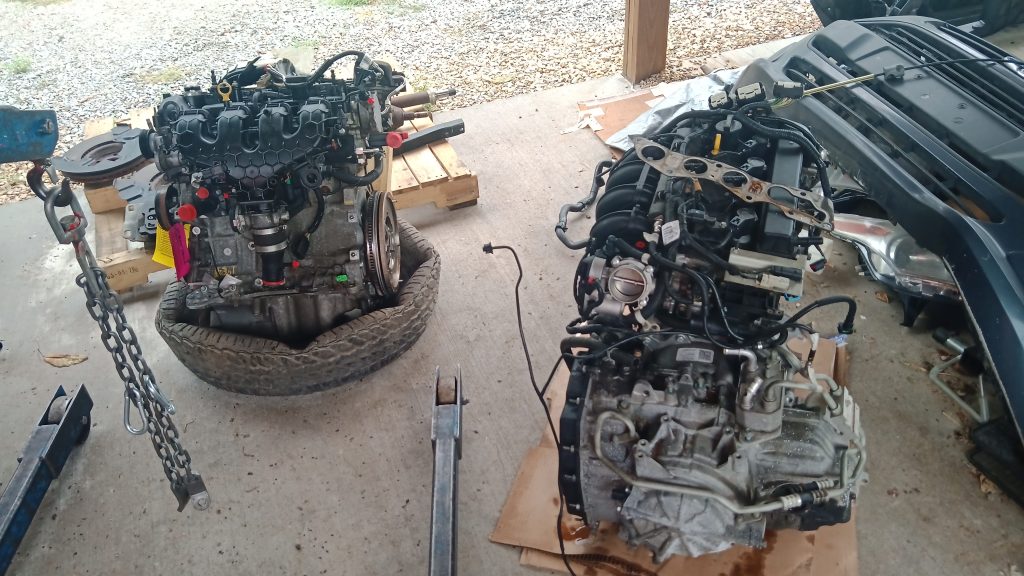I’m going to try to document my 2014 Transit Connect’s conversion from the stock 2.5L Duratec engine and 6F35 automatic to a shift-it-yourself 2.0L EcoBoost. Why? Because, that’s why. The Transit Connect in stock form leaves a lot to be desired in the performance department, and the transmission is perhaps the only real negative in the reliability department. Replacement transmission components (and consequently, remanufactured transmissions) are nearly impossible to find right now, and expensive when you do find them.
My goal is to replace the stock transmission AND engine for about the same cost as what I was quoted for a used automatic transmission. This isn’t a project for the faint of heart, and while some attempts have been made previously, if successfully completed this would be the first fully functional second-generation Transit Connect with a 2.0L EcoBoost and a manual transmission anywhere, and the first fully functional 2nd-gen Transit Connect with a manual of any kind in the US.
I’ve got a bunch of placeholders forthcoming, and will gradually fill them in and add pictures and parts information documenting the build. I’m still trying to figure out how best to organize all the info here–if stuff isn’t making sense or you have any suggestions, speak up. Especially if you see me heading toward a dead end–I’d appreciate the help, or at least knowing you’re enjoying watching the train wreck.
These next few posts will lay out my reasoning for picking what I did (where there was a choice), and figuring out what I think I’m going to need to get the job done. I’m writing this up post-hoc with respect to some of the planning and decision-making, and plan on a more comprehensive how-to guide later on.
The Engine
This was perhaps the easiest part selection task. I didn’t want an engine from an ST for a few of reasons: the much higher likelihood it would have been modded, I didn’t want a sound symposer (nowhere to connect it), and they’re a lot more expensive than otherwise identical engines from other vehicles. So first-generation 2.0L EcoBoost from an Escape it is, 2013-2016, so long as it was built before the switch to the twin scroll turbo in late 2015.
I did consider the twin-scroll engines, including the 2.3L used in the MKC, Mustang, Ranger, Explorer, etc. Of course, I’d need a PCM that would work–only the Mustang has a manual transmission, and the wiring harness layout is quite different. I’m sure it could be done, but it would be a lot more work. Keep in mind where I’m starting–it’s a 2014 2.5L with over 160,000 miles on it. When new, peak wheel horsepower was about 130, with about 120 lb-ft of torque (with a fairly flat curve to be sure–most of that available from 3K RPM to the redline). The first-generation EcoBoost would put me at 252 crank hp, 274 lb-ft of torque, without the losses suffered going through an automatic. Considering that torque is far more readily available at typical cruising speeds, we’re talking on the order of triple the under-foot reaction. An extra 50-100 hp isn’t trivial, but it’s definitely diminishing return territory.
The engine I purchased was a 2013, with 67,000 miles on it. Cost: $435
| 1S7Z-6340-AA | Oil filter mount gasket |

